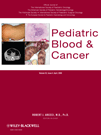Tracing survivors of childhood cancer in Australia
Abstract
Background
A major challenge when establishing a retrospective cohort of childhood cancer survivors is maximizing the enrolment of individuals treated as children. In Australia, several public databases can facilitate tracing of childhood cancer survivors; these include the Births, Deaths and Marriage Registers (BDMR), the telephone white pages (EWP), and the Australian Electoral Roll (AER). The aim of this study was to evaluate the characteristics of survivors traced for a cohort study examining the late effects of childhood cancer.
Procedure
Eligible participants included 1,198 individuals treated for cancer during childhood at Sydney Children's Hospital. Of these, 1,156 individuals were confirmed alive and subsequently traced by cross matching against the AER, BDMR, WP, and clinical records. Characteristics influencing the likelihood of tracing were evaluated using logistic regression analyses.
Results
Current addresses were obtained for 810 (70.1%) survivors. Overall, those diagnosed within the last decade were more easily traced than those diagnosed in an earlier decade (Test for trend, P < 0.01). In addition, older age at diagnosis and diagnosis of a sympathetic nervous system or renal malignancy were associated with a decreased likelihood of tracing in survivors, aged ≥18 years (P < 0.05). In survivors aged <18 years, age at diagnosis, sex, and cancer diagnosis were not associated with the likelihood of tracing (P > 0.05).
Conclusions
Our findings show that cancer type and year of diagnosis are independent factors influencing the ability to trace survivors of childhood cancer. Linkage to public databases provides a unique opportunity to recruit a representative hospital-based cohort of childhood cancer survivors in Australia. Pediatr Blood Cancer 2009;52:510–515. © 2008 Wiley-Liss, Inc.




